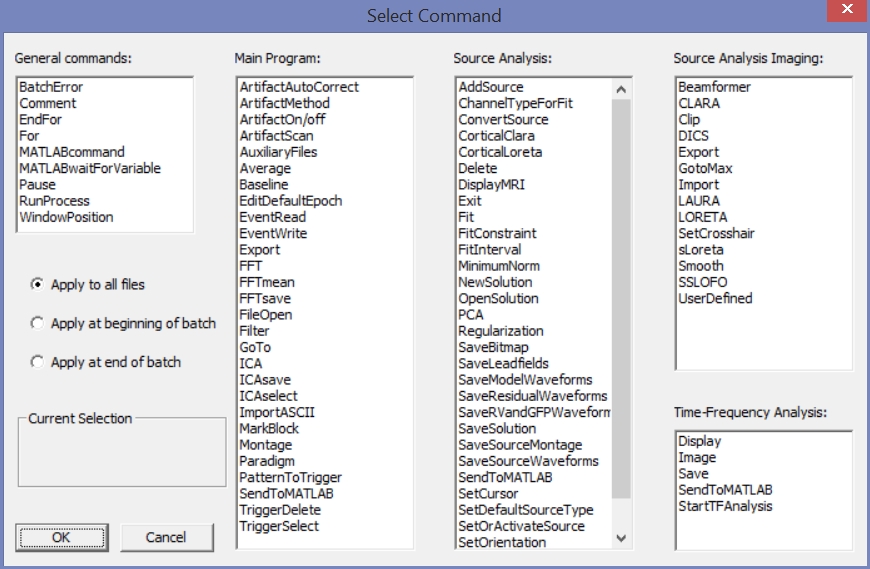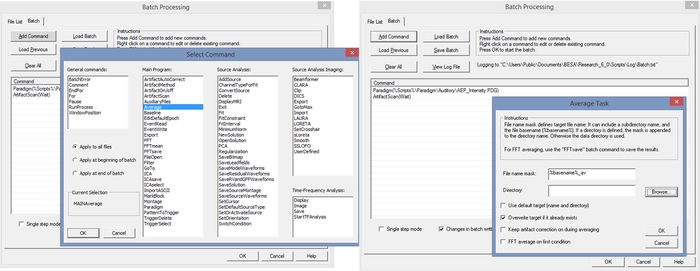Difference between revisions of "Batch Processing"
(Created page with "{{BESAInfobox |title = Module information |module = BESA Research Basic or higher |version = 5.2 or higher }} == BESA batches allow you to automate nearly all analysis steps...") |
(No difference)
|
Revision as of 15:26, 8 April 2016
| Module information | |
| Modules | BESA Research Basic or higher |
| Version | 5.2 or higher |
BESA batches allow you to automate nearly all analysis steps in BESA
The batch functionality that you find under the “Process” menu has been around for a while. Over the past few years, the toolkit that is available there has grown to an impressive size, such that with BESA Research 6.0, virtually all analysis steps can be automated, and applied to a list of files. At any point in time, the batch can also be halted to make parameter adjustments, should this be necessary. A complete analysis from pre-filtering, artifact scanning, averaging, source analysis, and export of results for subsequent statistical analysis, can be summarized in few steps. For many recurring tasks, ready-made batches are available already – and batches can also be assigned to function keys for maximum ease of use.
The set of available commands is shown below – sub-divided into
- general commands which allow e.g. loops, error handling, or pausing the batch for user input
- commands affecting the main program including ERP management
- commands for discrete source analysis
- commands for distributed source analysis
- time-frequency commands
For example, to automate averaging and to prepare data for statistical analysis, using an experimental paradigm for a number of subjects, a batch could have the following elements:
- Load the paradigm
- Perform an artifact scan
- Average the conditions
- Export the data of each condition for further analysis with BESA Statistics
In batch code, this will look like the following:
To add any command, e.g. “Average”, select the command from the list of commands and check the options dialog that appears:
Once the batch is complete, it can run over all open files, over a user-defined file list (simply drag files into the list from Explorer), or just over the current file. An example is shown below. Note that these batches are produced without entering any line of code by hand – it is all done using the graphical user interface of the Batch dialog.


